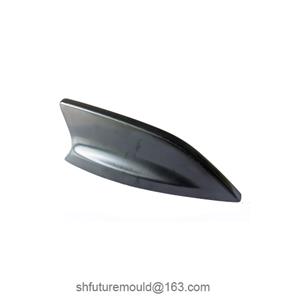Challenges in Polishing Injection Molds
Polishing injection molds is a crucial step in mold manufacturing, directly impacting the surface quality, precision, and service life of the finished product. However, due to the complexity of molds and the high standards for surface finishes, there are many technical challenges in the polishing process, mainly including the following aspects:
Challenges
1. Difficulty in Polishing Complex Shapes and Structures:
Mold designs often involve complex geometries, deep cavities, narrow gaps, and other features. These areas are difficult for polishing tools to reach, resulting in uneven polishing or residual machining marks, and placing high demands on the technical skills of polishers.
2. High Precision Surface Requirements:
The surface finish of injection molded products directly depends on the polishing effect of the mold. For molds of high-gloss or transparent products (such as optical lenses), a mirror-like polishing effect is required, which places stringent requirements on the process and material selection.
3. Hardness and Material Properties Affect Polishing:
Mold steels typically have high hardness and wear resistance, but the high hardness also increases the difficulty of polishing. In addition, the grain structure, toughness, and other properties of different steels have a direct impact on the selection of polishing tools and materials.
4. Elimination of Machining Marks and Defects:
Molds typically have machining marks, milling marks, or electrical discharge machining marks after processing. These marks are deep and irregular, and the removal process is tedious and prone to over-polishing or surface damage.
5. Control of Deformation During Polishing:
Mold polishing generates heat, which can cause slight deformation of the mold surface, especially for thin-walled structures. This deformation directly affects the mold accuracy and finished product dimensions.
6. Manual Operation and Efficiency Issues:
Most mold polishing still relies on manual operations, which are difficult to standardize and are time-consuming and labor-intensive. The experience and skills of the operator directly determine the final result, thus requiring a large number of skilled technicians, and increasing labor costs.
Solutions and Optimization Directions
1. Adopt High-Precision Processing Equipment:
Combine ultrasonic polishing machines, laser polishing technology, and other advanced equipment to improve the polishing efficiency and precision of complex areas.
2. Optimize Material Selection:
Select mold steels suitable for polishing, such as materials with high uniformity, high hardness, and low impurity content.
3. Improve Polishing Process:
Through multi-step polishing (rough grinding, fine grinding, and finishing), combined with different grit abrasives to remove marks layer by layer.
4. Introduce Automation and Intelligent Technology:
Introduce robotic polishing systems and intelligent monitoring to reduce reliance on manual operations and achieve stable polishing quality.
5. Pay Attention to Surface Protection:
Use cleaning lubricants and protective measures to reduce the impact of polishing damage and contamination on the mold.




